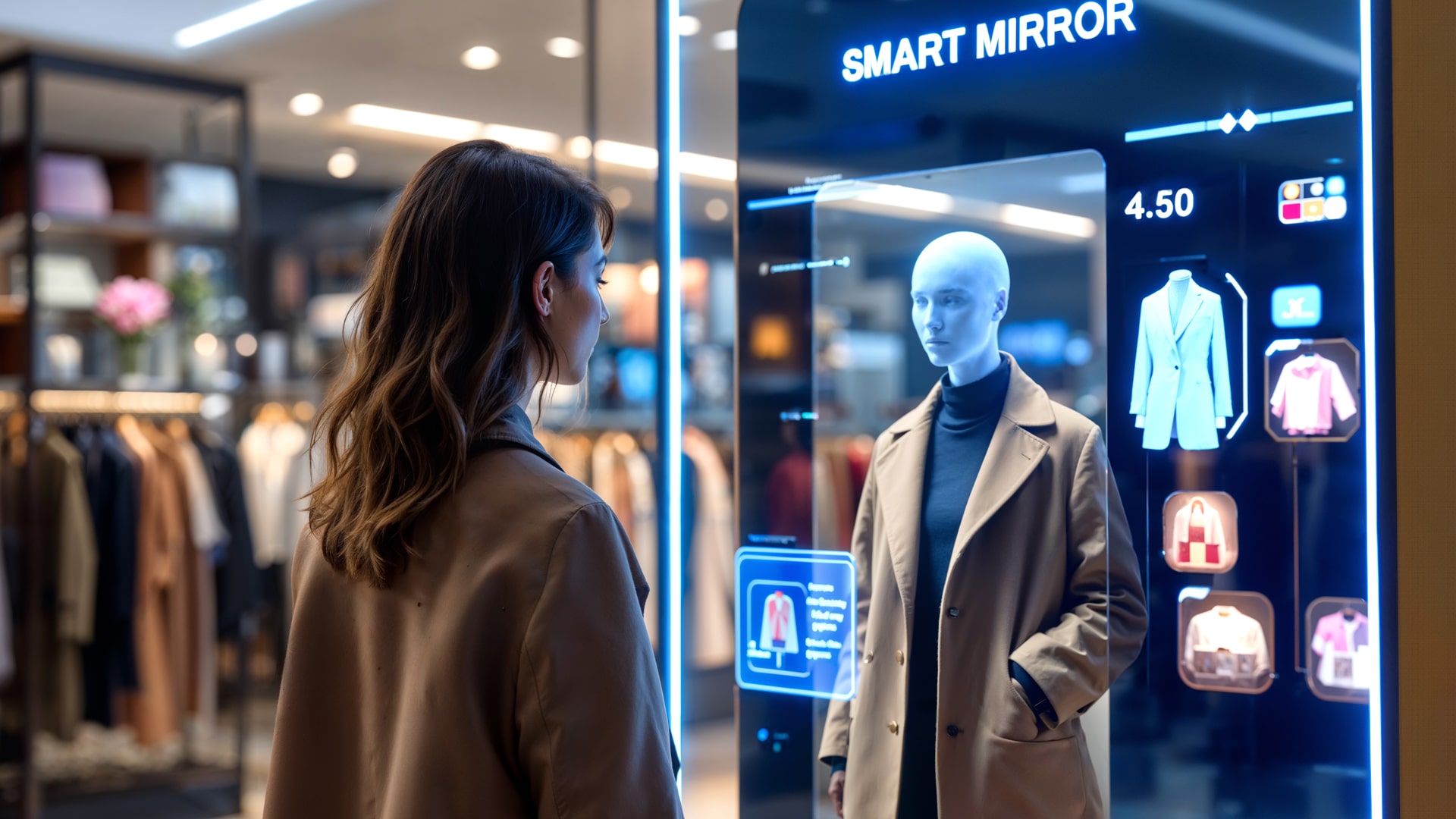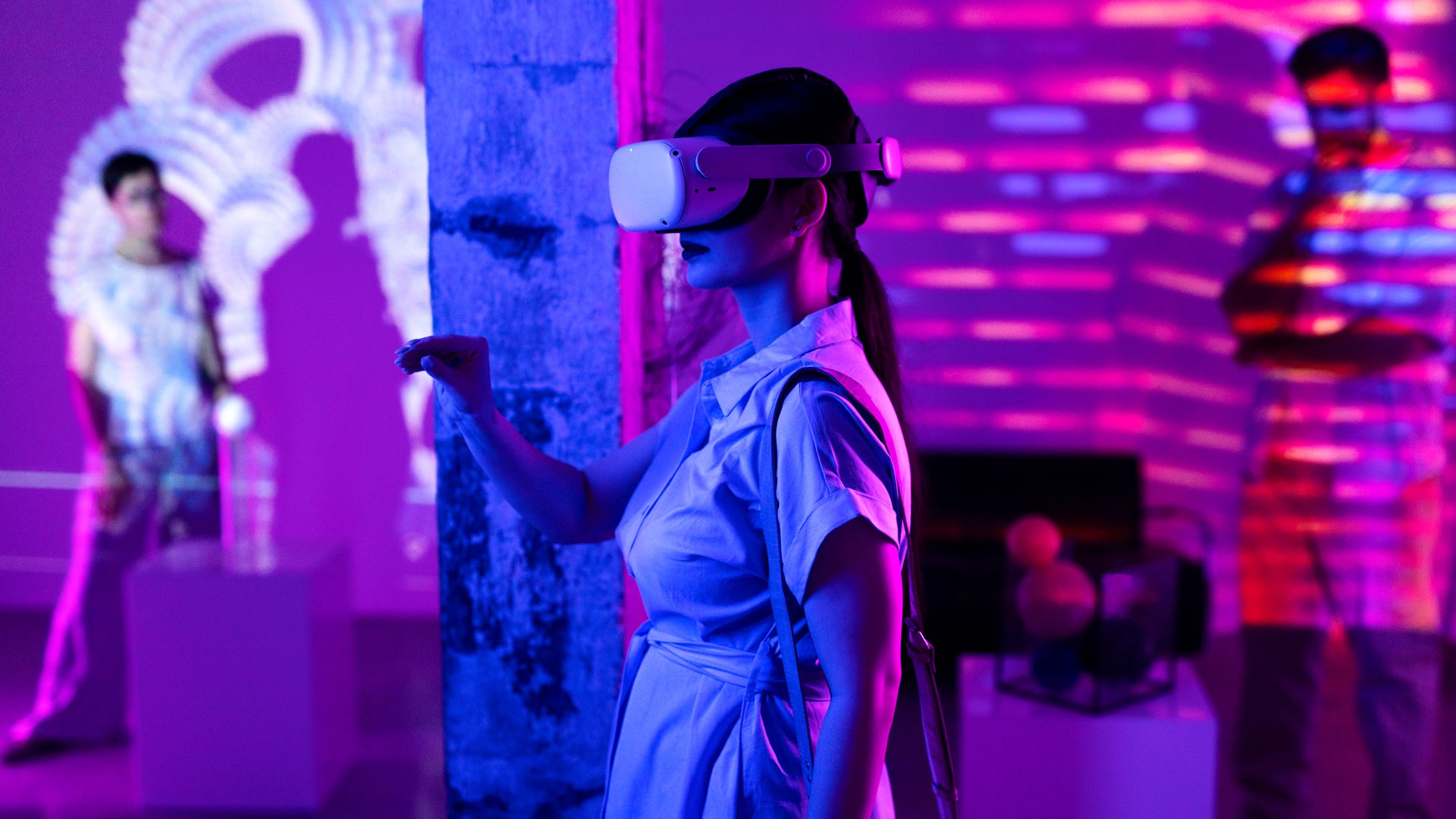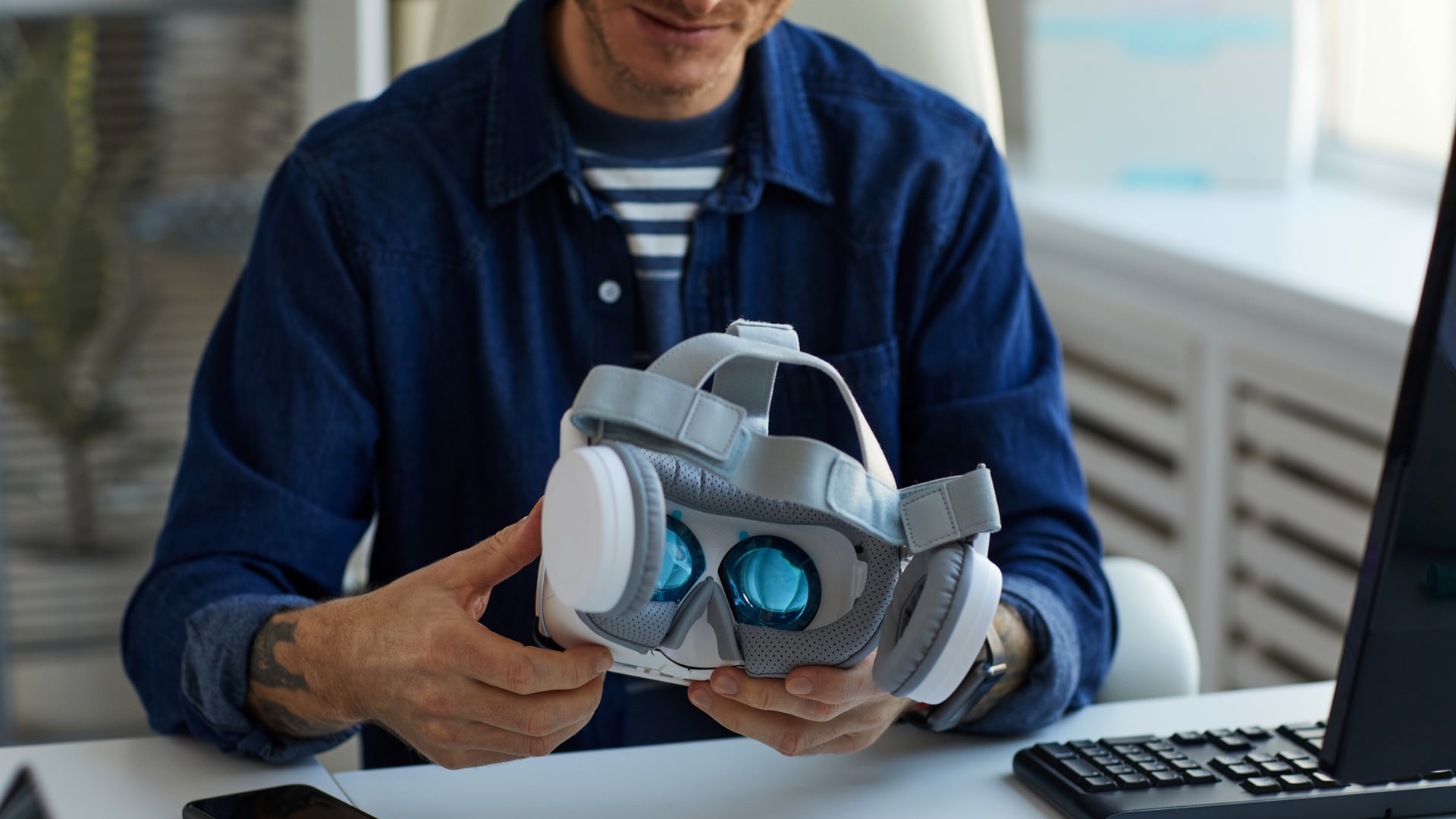
- Defining the Digital Dream: What Are AR and VR?
- A Brief History: The Evolution of Immersive Technologies
- Core Components Powering AR & VR
- How AR & VR Create Immersive Imagery
- Role of Audio and Haptics in Immersion
- Interactivity in Virtual Spaces: From Gestures to Gaze Tracking
- Applications Beyond Gaming: AR & VR in Daily Life
- Challenges on the Horizon: Limitations & Concerns with AR & VR
- Future Forward: The Next Wave in AR & VR Innovation
- Getting Started in the Magic: Resources for AR & VR Enthusiasts
- Final Thoughts
Magic has always fascinated us because it takes us out of our everyday life and opens up new worlds and possibilities. That’s probably why technologies like augmented reality (AR) and virtual reality (VR) have been introduced: to breathe life into our dreams and fantasies!
Big brands have started using these technologies to make marketing more magical too!
Thanks to AR, the IKEA app lets you visualize that bookshelf in your living room, adjusting the size and seeing how it fits your decoration without lifting a finger.
Coca-Cola also jumped on the bandwagon with a VR sled ride dropping users into a winter wonderland to hang with Santa.
But AR and VR aren’t just about fun gimmicks. They also have practical uses across entertainment, education, business, and more. But how does this magic work exactly?
The key is in the components powering the illusion. Let’s unpack the basics of AR and VR tech, from their history to real-world applications, to better understand how they blur the line between fantasy and reality!
Defining the Digital Dream: What Are AR and VR?
AR and VR are often used interchangeably, but they are actually different from each other.
To be concise, AR brings the fantasy to the real world but VR takes you to the fantasy world.
AR, or augmented reality, is like sprinkling a bit of digital fairy dust onto the real world. AR makes it possible for you to suddenly see virtual stuff dancing around your living room while chilling on the sofa with just a smart device in your hand. And if you’re using AR glasses, things get even cooler – digital stuff popping up right in front of your eyes.
VR or virtual reality, on the other hand, is where things take a sci-fi twist. VR is like teleporting you into a whole new world that’s purely digital magic.
By using a VR headset, you can enter a 3D universe that’s totally separate from your sofa and snacks. You can explore places and times you’ve never seen before. And you can even play with things or chat with characters using VR controllers or gloves. VR literally shuts out the real world so you can dive into a whole new dimension.
Take a look at this:
A Brief History: The Evolution of Immersive Technologies
When you talk about the roots of immersive tech, people often mention the stereoscope in the 19th century as the basic version of VR headsets. While there’s some truth to that, immersive technology became more popular in 1957, with Morton Heiling inventing the Sensorama and giving people an immersive, “sensory” experience where they could sense the smells and vibrations when watching a movie.
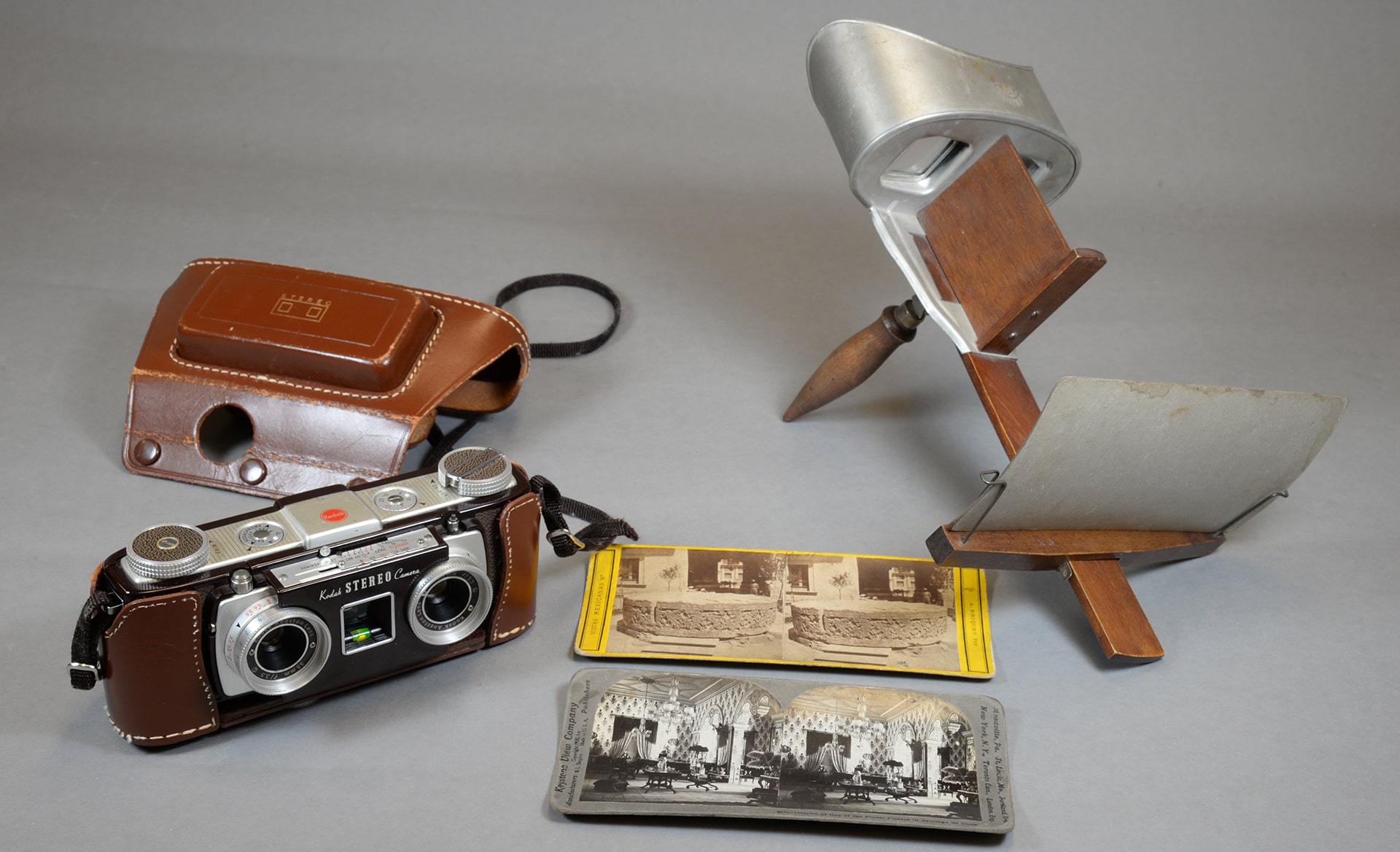
Then, as players like Microsoft and Atari emerged in the 80s, the tech sector started to heat up and big companies started to pour money into AR and VR ventures, especially consumer VR headsets. VPL Research was one company that took the money and built complete VR solutions with suites, headsets, and gloves.
Sega attempted to do a similar thing in the early 90s but only found limited success with arcade headsets. Many similar cases followed in the 90s as well as the 2000s, but problems with latency made VR headsets a literal headache for people because the processors were not fast enough to keep up with head movements, creating a sense of cybersickness.
That was until the 2010s when powerful smartphone processors paved the way for VR/AR games, QR codes, and other apps.
Core Components Powering AR & VR
The key components of an augmented reality system are a camera, a headset, a processor, a sensor, a controller, and a display. The camera takes pictures of the actual environment. The processor finds and figures out the orientation and location of everything in the pictures.
The processor also does the rendering for the virtual items. The photos of the actual world are on display, with the virtual items superimposed on top of them. Then, you have the display, which can be anything from a portable electronic device, to a pair of smart glasses, or a head-mounted display (HMD).
AR & VR also use specialized bits of software. 3D software makes it possible to superimpose digital images onto physical objects. To show and keep the data, you also have cloud computers or specialized servers. Virtual pictures and models are pulled from these sources and displayed on the phone.
How AR & VR Create Immersive Imagery
In AR, the user must have access to a smart device in order to interact with other virtual objects. The only thing you can do in VR is interacting with virtual objects in a virtual space. The combination of these two technologies eliminates the need for a smart device and ushers in a whole new realm of possibilities by allowing the user to stand in a real space while seeing a digital picture or environment via a headset.

Virtual reality (VR) equipment blocks the user’s vision and presents a simulated setting for them. In this setting the user is able to interact with virtual objects via utilizing other senses like touch or smell.
Augmented reality (AR) devices superimpose digital content onto actual environments, with sensory signals providing a seamless transition between the two worlds. 3D augmented reality systems, sometimes known as mixed-reality gadgets, combine virtual and real-world aspects. Many businesses use this because they know how it can engage their customers. Like how would you feel about ordering your burger like this?:
Role of Audio and Haptics in Immersion
Spatial audio and haptics can put you in a very engaging environment by creating a feeling of co-presence and reality, supporting different cues, and allowing users to experience lifelike, multimodal interactions.
For example, You can easily feel a virtual buddy or co-worker’s speech, breathing, and pulse as if they were right there. You may also sense the tone, intensity, and mood of their voice, plus their movements, gaze, and gestures.
Interactivity in Virtual Spaces: From Gestures to Gaze Tracking
When using AR and VR, we desire to interact with virtual content in a natural and intuitive way. Traditional input tools like keyboards and touchscreens don’t quite cut it in immersive environments. It breaks the sense of really “being there.”
Developers are exploring more intuitive ways to interact that feel lifelike.
Hand and body gestures let us reach out and manipulate virtual objects just by moving naturally. Voice commands leverage how we already talk to each other. Eye tracking knows what we’re focusing on. And brain interfaces could one day let us control things just by thinking.
By moving to these more natural inputs, interacting in augmented and virtual realities can become as seamless as interacting in the physical world.
Applications Beyond Gaming: AR & VR in Daily Life
It is not only the game world that AR and VR are influencing. The effects are also visible in the following aspects:
Education
AR and VR can enhance learning outcomes by providing immersive and interactive experiences that engage students’ attention and motivation.
To give you an example, a company named Labster allows users to run experiments in sophisticated VR labs for science without leaving the comfort of their own homes and without spending a lot of money on specialized equipment.
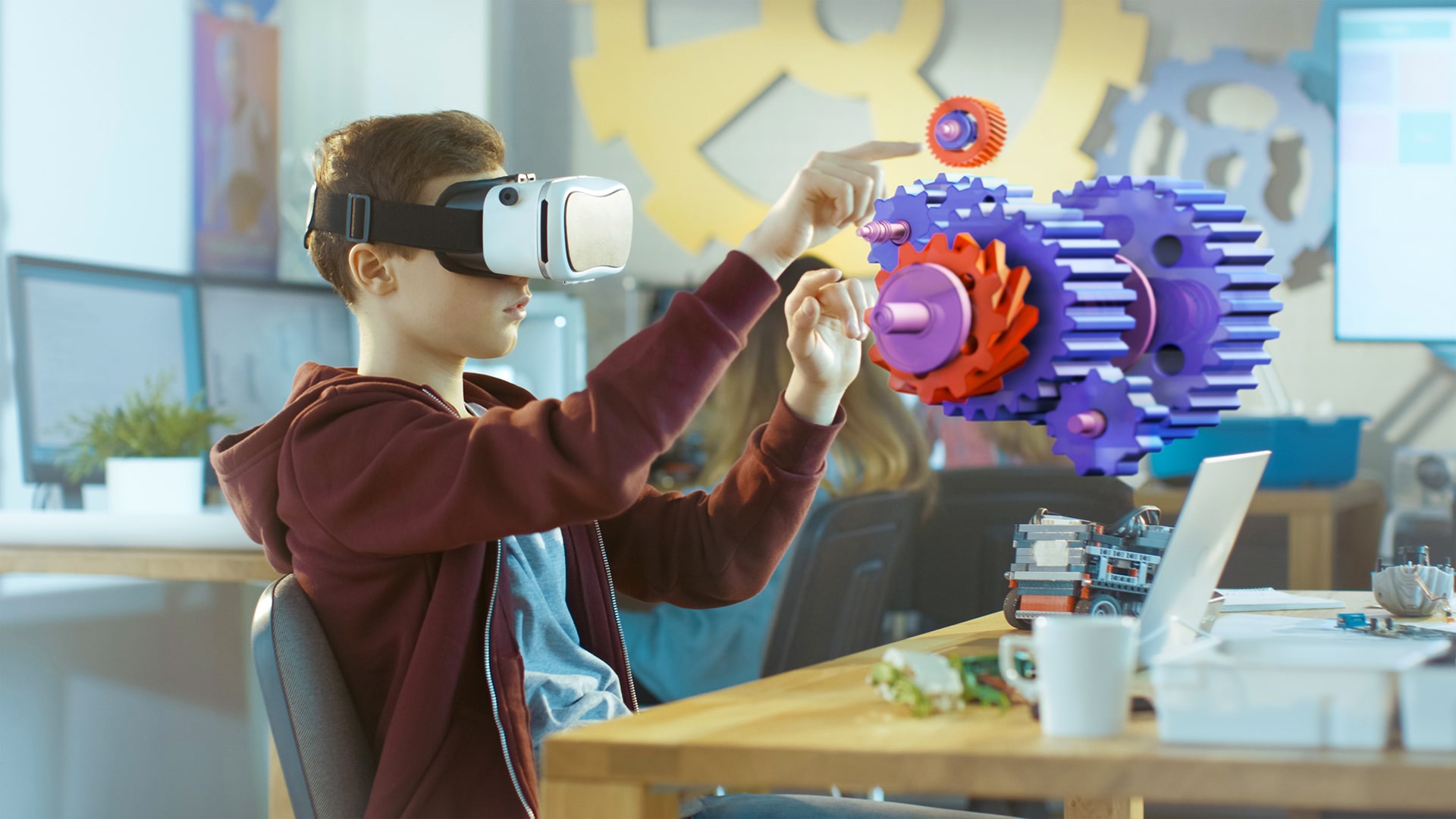
Healthcare
VR and AR play a crucial role in healthcare by allowing doctors and nurses to practice for life-or-death scenarios. This could boost their ability to handle a crisis. Plus, with AR, we can monitor the wound’s progress without causing any further damage.
To show how a wound develops over time, a precise 3D model of the injury is combined with AR elements using a portable projector. Doctors can provide effective follow-up treatments and exercises because they have access to objective patient information. It helps nurses effectively treat the wound as well. It also helps patients learn more about their condition, which means that they’re more receptive to doctors’ orders.
Retail
With virtual reality, a customer doesn’t even need to leave their house to complete the shopping process from start to finish. By creating virtual storefronts for their customers to browse, retailers can offer a more tailored VR experience.
IKEA is an excellent example of how AR can shift and improve customer experiences by allowing customers to virtually see how furniture looks in their own homes before even setting foot in IKEA.
Business
From manufacturing and product design to employee training and marketing, AR and VR have changed the game for businesses. Now, you can design interactive, immersive ads with the help of AR/VR technology, which is changing the game. With augmented reality (AR), companies can give customers a real, tangible experience of the item before they buy them.
For instance, Ford uses VR to simulate assembly lines to help workers understand complex processes. This has the potential to reshape industries and make work more efficient and engaging.
Challenges on the Horizon: Limitations & Concerns with AR & VR
Although AR and VR had significant improvements, there are still issues like latency, battery life, and cost. These issues make it harder to bring AR/VR to every industry and use it in a mass number.
Apart from this, there are other non-technical issues that we have to keep in mind so the cons don’t outweigh the pros such as concerns regarding people’s health while working with these technologies. Issues like negative effects on vision, physical motion, and emotional effects such as becoming a cyber addict. Legal and ethical problems are also of importance.
Future Forward: The Next Wave in AR & VR Innovation
Today’s consumers are looking for cheap software with more practical uses beyond entertainment. So, it’s probable that we’ll encounter new dimensions of reality in ways we can’t even imagine right now.
Innovations in tech like VR/AR chips and WebVR will make VR and AR systems quicker, lighter, and cheaper. Also, 5G connections and new smartphones with better cameras and processors will make it possible to view more complex immersive content everywhere.

Getting Started in the Magic: Resources for AR & VR Enthusiasts
Now that you’ve had a crash course on AR and VR, you may be interested in learning more and even expanding your skills in this section. Here, you have three beginner courses that can give you the foundation.
Introduction to Augmented Reality and ARCore
This is a rich course offered by Google on Coursera that teaches you the basics of AR and how to use the ARCore SDK to create AR apps for Android devices.
You can learn the basics of AR and create an AR experience via ARCore in this course.
- How to tell between various forms of AR experiences;
- Common applications of AR;
- The inner workings of AR;
- AR development platforms like Google Poly and Unity;
A Beginner’s Guide to Unity augmented reality certification(Udemy)
This course will show you how to utilize Wikitude to create AR apps for both Android and iOS, blending AR Kit and ARCore. Taking this course will teach you how to create attractive apps and 3D models by fusing the real and the virtual worlds. In addition to learning the theory behind making AR applications, you’ll get some practice with hands-on workshops.
Google’s VR and 360 Video Production
This course will teach you the basics of VR and 360 video creation and will show you how to make VR videos from start to finish. The first step is to familiarize yourself with the site and the content.
Google Cardboard
This low-cost VR viewer lets you experience VR using your smartphone. You can download various VR apps from the Google Play Store or the App Store, and insert your smartphone into the cardboard viewer. You can also create your very own VR apps using the Cardboard SDK.
YouTube VR
In this platform you can watch and upload 360-degree videos and live streams in VR.
You can also use various VR headsets or viewers to enjoy immersive videos from various categories including music, sports, travel, education, and many more. Interacting with other users and creators using comments, likes, or chat is another great feature that it offers.
Final Thoughts
AR and VR are here to help businesses make a greater impact on their customers. They have even entered the realm of mascots which we are going to talk about in our next blog posts.
To sum up, AR is the technology that lets you see fantasy in the real world (in a legal way ????) but VR is the technology you use to transfer yourself into a fantasy world.
We also talked about the physical and emotional side effects of using such technologies. So, be careful while using them.
For businesses looking to AR / VR Developer, we highly recommend Dream Farm Agency, a leading developer in AR solutions, to help bring your visions to life.

Rojan

